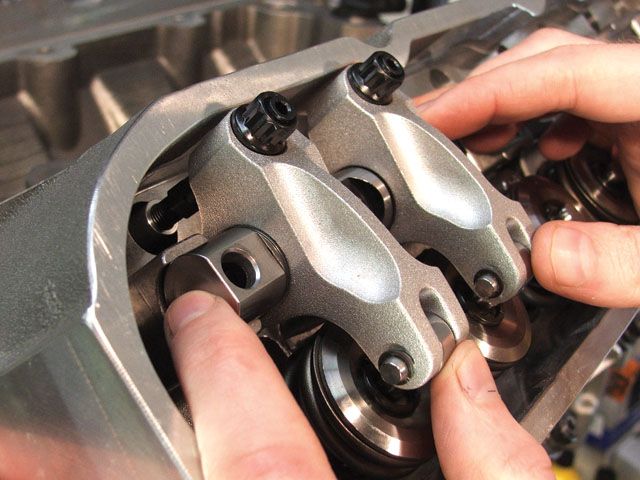More Cheat Sheets: 13 Key Automotive Formulas You Should Know

How do you calculate compression ratio? What’s the best way to figure out engine displacement?
In the automotive mechanics world, there are formulas and conversions for measuring just about everything—from horsepower and torque to carburetor cfm and gear ratio. The key is remembering them.
While cheat sheets might have frowned upon in your sixth-grade classroom, we strongly encourage them in the garage, shop, or pits. That’s why we’ve put together this list of 13 key performance formulas you should know when building or tuning your street or race vehicle.
Read it, print it out, and tape it to your beer fridge. (Quick—while your sixth grade teacher isn’t looking!)
Racing Carburetor CFM
Racing Carburetor CFM = RPM x Displacement ÷ 3456 x 1.1
Note: Summit Racing also offers this CFM Calculator to make the job easier.
Displacement
Displacement = .7854 x Bore2 x Stroke x Number of Cylinders
Correct Compression Ratio (CCR)
CCR = FCR (Altitude/1,000) x .2
Note: You can also take this Compression Ratio Calculator tool for a spin.
Tire Diameter
Tire Diameter = (MPH x Gear Ratio x 336) ÷ RPM
Rocker Arm Ratio and Valve Lift
Gross Valve Lift = Camshaft Lobe Lift x Rocker Arm Ratio
Horsepower
Horsepower = (RPM x Torque) ÷ 5,252
Torque
Torque = (5,252 x HP) ÷ RPM
Rod Ratio
Rod Ratio = Rod Length ÷ Crank Stroke Length
Average Piston Speed
Average Piston Speed = Crank Stroke x RPM ÷ 6
Rear Gear Ratio
Rear Gear Ratio = (RPM at Finish Line x Tire Diameter) ÷ (MPH x 336)
Note: You can also save this link to a handy Gear Ratio calculator.
Volume (CCs) of Deck Clearance
CCs of Deck Clearance = Bore x Bore x 12.87 x Depth of Deck Clearance
Volume (CCs) of Head Gasket
CCs of Head Gasket = Bore x Bore x 12.87 x Thickness of Head Gasket
Compression Ratio
Combined Chamber CCs + Gasket CCs + Deck CI CCs + (Displacement x (N))
÷
Combine Chamber CCs + Gasket CCs + Deck CI CCs
(N) = 2.0483 for 8-cylinder. (N) = 2.7311 for 6-cylinder. (N)=4.0967 for 4-cylinder.





i do not use silicon pistons, it cost me a race motor just replacing stock pistons with hypertectic ones? i thought i looked them over good? but looking after it blew up the wrist pin hole one the one that let loose was made too thin around the pin? it jerked it right out of the one piston, after looking at all the pistons together the one had less writ pin material around it, so be cautious using non factory/or forged pistons, even with low compression, like i had. lost a reliable motor over 100.00 pistons…..
Very good stuff
I once had a book that had all of the engine formulas in it including determining the proper diameter, length, and length of collector. of exhaust pipes by where you wanted the torque to peak, same for intake runners. It also had formulas for selecting cam shafts, for proper torque peak tuning.
Looking at a compression ratio is showing minimum or maximum displacement through the head just goes to show how smart these guys in here are wanting to argue with math
This site has a bunch of useful ones too,
http://www.gtsparkplugs.com/AutomotiveCalculators.html
Explain why I need to factor in number of cylinders to get the compression ratio… I would think all the cylinders are balanced which would kill the need to know the other 7 on a V8…I.E. Deck clearance + head gasket thickness + combustion cc +/- piston dish ÷ cylinder cc = Compression ratio…
Looks like that formula uses displacement as the known swept vol. So it uses number of cylinders vs displacement to get the swept vol down to one cylinder.
I’m a retired mechanic. I have known of a few formulas that are needed in shop work.
I have many car related books and magazines so I do not need to remember most.
I have always remembered cubic inches formula by memory.